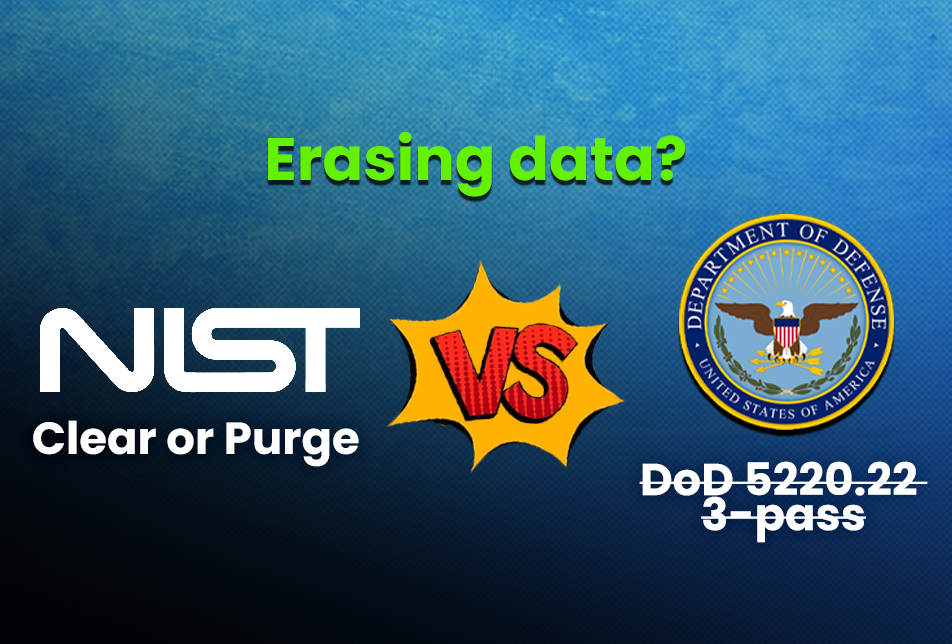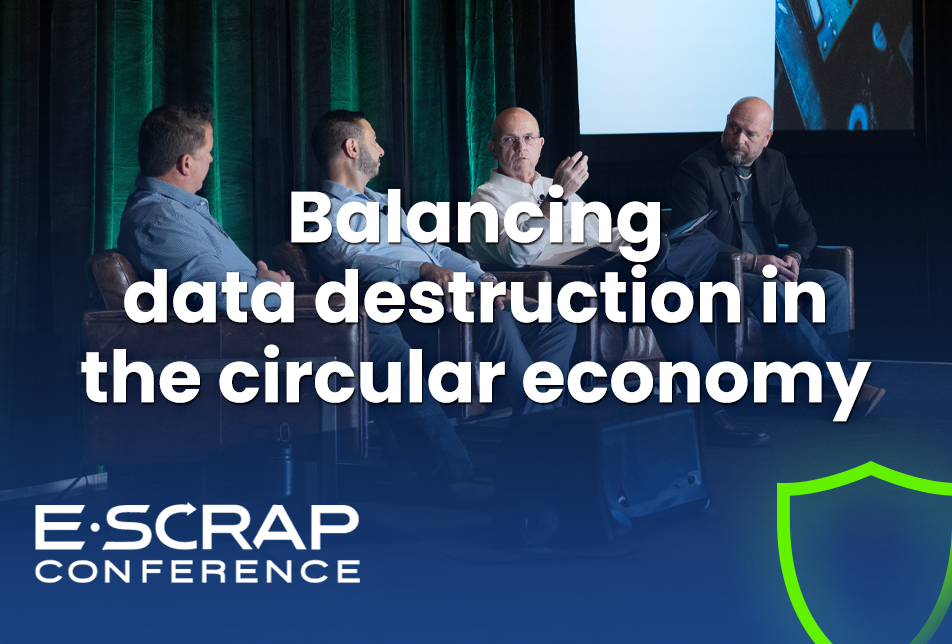Confused about sanitization standards for wiping drives? Do you use DoD standards for erasure? Or NIST standards? How many passes? 1? 3? 7? Follow our short guide to understand DoD standards (don’t use them) and NIST Purge and Clear sanitization standards (use these) for erasing HDDs and SSDs.
Guardian Data Destruction provides electronic media data destruction – shredding, erasure/wiping, degaussing, mutilation and pulverization. We do it all and we’re not shy about saying that we know how to ensure secure, compliant, absolute data destruction.
Working hand-in-glove with our ITAD, VAR, MSP and reseller partners, we frequently get data sanitization requests for a DoD 3-pass, DoD 7-pass and strangely enough, a DoD 1-pass. When we see these quoting line items, well, it’s hard not to jump into teaching mode and educate our audience.
So, audience (customers and partners alike), here is an encapsulated data sanitization/wiping standards timeline with context and recommendations. It is for use by organizations of all sizes, all industries, all regulations and by persons in any role engaged in data storage, risk management and IT asset management.
2006 – Department of Defense erasure standard
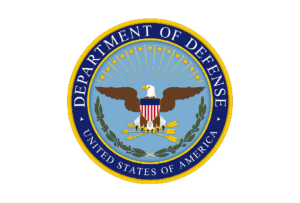
Publication: DoD 5220.22-M National Industrial Security Program Operating Manual (NISPOM) January 1995
- DoD 3-pass (standard) and 7-pass (extreme) are based on the DoD 5220.22-M erasure standard that was last updated in 2006.
- Today’s technology has changed significantly in 25 years and moved beyond the old platter hard drives.
- The DoD 5220.22-M standard does not include data storage innovations from 2006 including SSDs of any shape, size or configuration. Read about SSD form factors (like PCIE and M.2) and how to spot them or higher-density HDDs in development.
- Even the DoD isn’t citing its own standard for data erasure due to limitations and age.
2014 – NIST 800-88 Rev 1 erasure standard
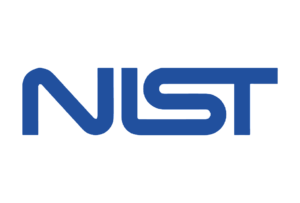
- Established for government use and originally published in 2006, NIST 800-88 Rev 1 (2014) is the current, best-in-class method for absolute, effective electronic media sanitization for private and public industries and institutions. It includes a broad and diverse range of data storage media types (not just HDD).
- For most companies and data protection experts, the DoD 5220.22-M standard has been replaced with the NIST 800-88 (1 Pass) standard.
- There is an updated standard in the works for newer technologies including HAMR but no scheduled release date. Get ready for more market confusion!
Why you should remove 1-PASS, 3-PASS (and 7-PASS) terminology from data sanitization service requests
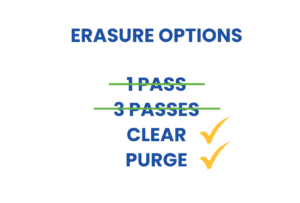
- The term “Pass” refers to the number of times an erasure software will write specific patterns of 1s and 0s across a drive.
- Passes are only relevant to HDDs following DoD 5220.22-M from 2006. At that time (25+ years ago), the passes were needed to ensure a complete and thorough erasure.
- Following today’s best standard and for HDDs and SSDs alike, the NIST standard 800-88 Rev 1 does not use PASSES. For erasure, ask for either Purge or Clear. (For shredding, pulverization or degaussing, ask for NIST Destroy) because purge and clear both encompass 1-Pass.
Understanding NIST 800-88 Rev 1 Clear, Purge (and Destroy)
NIST Clear
Overwrite all user-accessible storage locations on the media with non-sensitive data (binary 1s and 0s). Use standard read/write commands, techniques, software and hardware tools to overwrite target data. Where rewriting is not supported, manufacturer resets and procedures that do not include rewriting might be the only option to Clear the device and associated media. See Factory Reset.
| Sanitization standard | NIST Clear – Overwrite |
| Data sanitization applications | Secure erasure, remote erasure, enterprise erasure, hyper-scale erasure (aka wiping, cleaning, sanitization) |
| Level of data protection | Moderate (effective against keyboard attack) |
| # of Passes | Ask for NIST Clear (a 1-pass overwrite with verification) |
| Electronic media | Floppy disks, hard disk drives (ATA, SCSI), flash media (USB sticks, memory cards, SSDs) |
| Pros | Broad media applications Data storage media may be reused, saving on replacement costs |
| Cons | Does not address data found in native, hidden or inaccessible areas |
| ESG/Sustainability | Data storage media can be reused (extended lifecycle) rather than recycled or thrown away |
NIST Purge
Purge renders target data recovery infeasible using media-specific state-of-the-art laboratory overwrite, block erase, and Cryptographic Erase methods. With a higher level of media sanitization (than Clear), Purge is recommended when sanitizing more confidential data from all types of data storage.
| Sanitization standard | NIST Purge – overwrite, block erase, and cryptographic erase |
| Data sanitization applications | Secure erasure, remote erasure, enterprise erasure, hyper-scale erasure (aka wiping, cleaning, sanitization) |
| Level of data protection | High (effective against lab attack) |
| # of Passes | Ask for NIST Purge (also a 1-pass overwrite with verification) |
| Electronic media | Floppy disks, hard disk drives (ATA, SCSI), flash media (USB sticks, memory cards, SSDs) |
| Pros | Broad media applications Data storage media may be reused, saving on replacement costs |
| Cons | Destructive, non-erasure methods of purge including degaussing, incineration, shredding and pulverization will render the data storage unusable |
| ESG/Sustainability | Data storage media can be reused (extended lifecycle) rather than recycled or thrown away |
NIST Destroy (not erasure!)
| Sanitization standard | NIST Destroy |
| Data sanitization methods | Disintegrate, pulverize, melt, incinerate, shred |
| Level of data protection | High |
| # of Passes | Ask for NIST Destroy |
| Electronic media | Floppy disks, hard disk drives (ATA, SCSI), flash media (USB sticks, memory cards, SSDs) |
| Pros | Broad media applications Could be the only option when clear or purge methods fail (known or unknown reasons) |
| Cons | Media cannot be reused, recycling of e-waste is required Shred size must be matched to media (e.g., SSDs require 2mm shredding) |
| ESG/Sustainability | Recycle or incineration |
A final sanitization clarification about DoD vs NIST vs PASS
Requesting a NIST CLEAR or PURGE is setting yourself up for the most recent, most-used and best-in-class standard for data storage erasure.
Asking for a 1-PASS (or any PASS) is a throwback to an outdated 2006 standard. Ask for Clear, Purge or Destroy.
Download the complete NIST SP 800-88 Rev.1 Guidelines for media sanitization here >
Coming soon: The Guardian Guide to NIST Clear, Purge and Destroy options (Request an early release copy here.)
Your industry may affect your erasure protocols and decisions. See what regulations govern the data security of your business >
Still confused about NIST vs DoD? Or Clear, Purge and Destroy? Talk to an expert on data destruction or call us.
ITADs, VARs, MSPs and resellers, let us know if you need additional educational tools to help your customer decide the most secure and compliant method of sanitization and IT asset disposition for their electronic data storage in desktops, laptops and data centers. Guardian Data Destruction experts are here to help!
